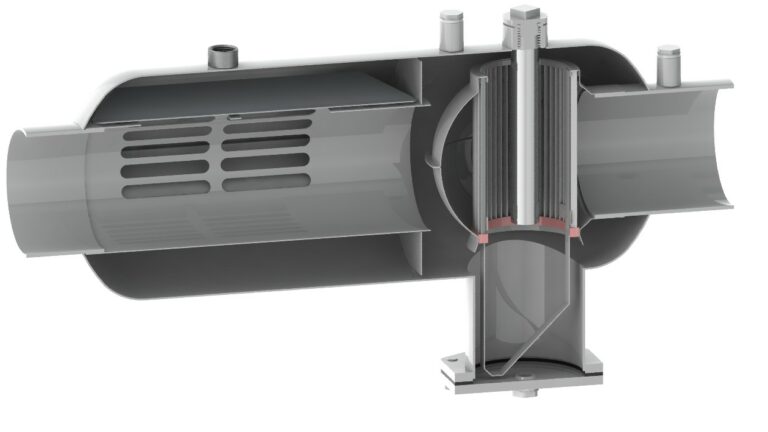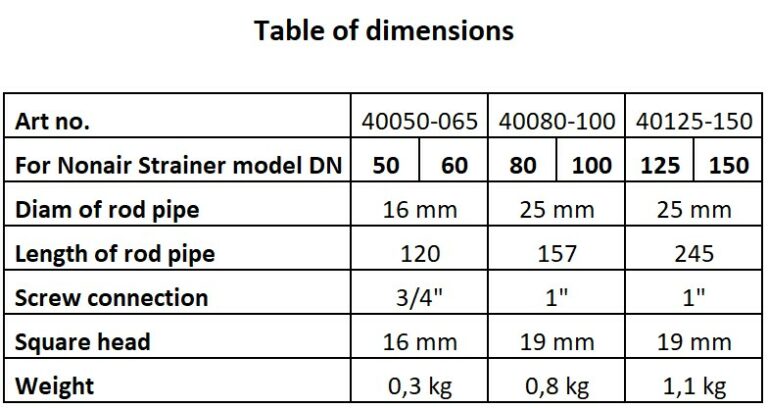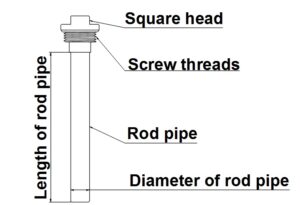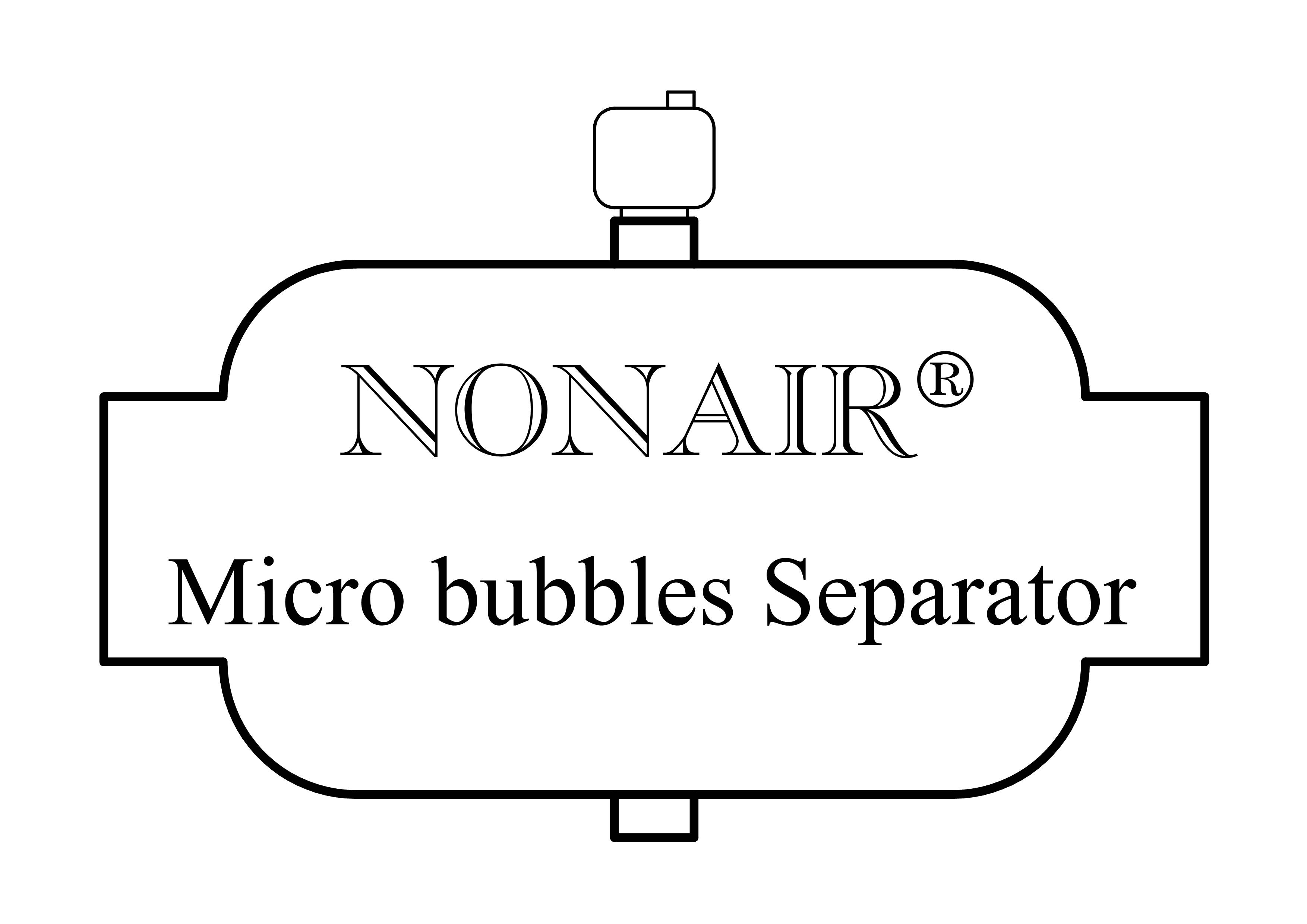NONAIR® Magnet rod
The new generation of pumps are power saving. Unfortunately, the smallest particles like Magnetite and similar dirt can suddenly disrupt the operation. The result is often and increased wear and at the end a pump breakdown.
With use of the NONAIR® Magnet rod, an accessory for the NONAIR® Strainer model, can magnetic particles be separated from the fluid in heating and chilled water system.
This will secure the maintenance of a reliable operation.

The NONAIR®Magnet rod is designed with powerful Neodym magnets placed inside a Stainless Steel tube. The Magnet rod has threads in one end and can be screwed into the intended socket on top of the body of the NONAIR® Strainer model. The Magnet rod will thus be positioned right in the center of the flow and even at the inside of the Strainer insert. Flushed by the fluid the Magnet rod will now be able to separate all the magnetic particles present. Accordingly they cannot cause any further problems or damage in the system.
After a certain period of operation, the NONAIR® Magnet rod can simply be unscrewed for manually cleaning. The observed amount of collected dirt on the Magnet rod gives an indication of necessary interval of cleansing.
Design
- Magnets of powerful Neodym material with corresponding poles of magnetic material.
- The both ends of the Magnet rod are made of non-magnetic material for easier cleaning.
- The screw end and the tube that covers the Magnets are made of acid proof Stainless Steel, 316L.
- The screw connection in one of the ends fits to the intended socket on top of the body of the NONAIR® Strainer model.
- The screw connection is sealed by an O-ring if EPDM.
- Design temperature for the magnetic Neodym material is 120°C.
- The strength of the Magnet rod correspond to about 8.000 Gauss.
Installation
Unscrew the plug from the intended socket on top of the body of the NONAIR® Strainer model and in screw the Magnet rod to tight mode.
Operation
After a period of use, simply unscrew the Magnet rod and manually clean the surface from particles and dirt. Repeat the cleaning procedure on intervals with regarding of the collected dirt on the surface of the Magnet rod.


